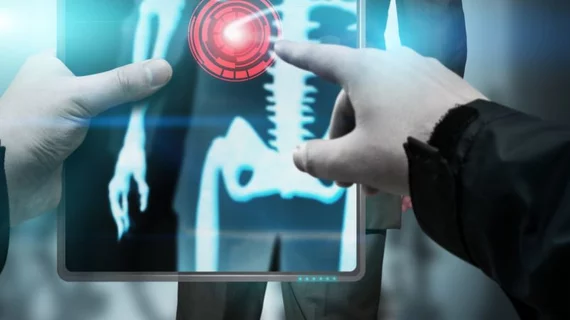Guided errors in medical training improve interpretation skills post-residency
Training that intentionally causes medical students to make errors during CT scan reads may improve their diagnostic abilities post-residency.
A new study in JAMA delves into how error management training (EMT) in educational settings builds adaptive expertise in interpreting head CT studies among nonradiologists. The training method can be especially beneficial for emergency medicine residents who are often responsible for identifying time-sensitive CT pathology.
“Error management training is a teaching method that may develop physicians’ adaptive expertise,” corresponding author Leonardo Aliaga, MD, from the Department of Emergency Medicine at Stanford University, and colleagues explained. “In EMT, learners are asked to solve difficult problems before they are taught how to solve them. Importantly, errors are encouraged while learning. These errors focus learners’ attention on a problem’s underlying conceptual features, which improves their ability to apply learned skills to new problems."
The team recently compared the training strategy to an error avoidance method to determine how it affected residents’ competency in understanding head CTs. For the study, postgraduate year 1 through 4 emergency medicine residents from seven different programs were divided evenly into groups that completed either difficult EMT, easy EMT or error avoidance training.
Prior to completing an online CT curriculum, the error avoidance group received didactic training instruction, while both EMT groups were without guidance. The questions between the groups differed as well, with the EMT group answering more difficult questions (leading to more errors) in comparison to the error avoidance group.
As expected, the difficult EMT group made more errors during their training. On the post-test, however, the difficult EMT group outperformed the other two cohorts by 15%-20% on the adaptive expertise cases. The training was found to be most effective among students who were earlier on in their residency.
Although encouraging residents to make errors may seem counterintuitive when physicians are expected to keep mistakes at a minimum in clinical practice, the group suggested that the method offers students a “powerful advantage.”
“Errors force learners to confront their knowledge gaps and faulty mental schemas," the authors wrote. "Learners use their wrong answers as contrasting examples to the correct answer, which helps revise their mental schemas. That contrast helps learners recognize the conceptual features of a problem, which develops adaptive expertise.”
The group added that they attributed the strong performances of the difficult EMT group to their training enabling them to identify their own knowledge gaps in the errors they initially made.
“Gaining a better understanding of those tools facilitated transfer of their learned skills to the adaptive expertise cases,” the authors explained.
The team suggested that their findings challenge the assumption that traditional errorless training models are best for educating future physicians, noting the superiority of EMT methods for fostering adaptive expertise—a critical skill in medicine.
Learn more about the study here.

